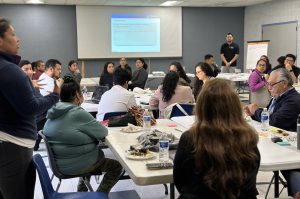
Advancing a Collaborative Agenda in Southeast LA
Advancing a Collaborative Agenda in Southeast LA In 2022, the California Community Foundation (CCF) launched the Regional Recovery Hub to strengthen place-based coordination in Los Angeles County
Variable Definitions:
Immigrants Entering U.S. by Decade: The number of people who were not born in the United States or Puerto Rico and entered the country during the following time periods:
Source:
American Community Survey (ACS), 5-year estimates, Table B05005
Years Available*:
2010 – 2023
*Note: Each year of available data shown above is a 5-year estimate, or an average of data collected over a five year period. 5-year estimates are used to increase the reliability of the data at small geographies like neighborhoods and census tracts. The years shown on the NDSC map represent the final year of the five year average (e.g. “2010” represents 2006-2010 data, “2011” represents 2007-2011 data, and so on). For the most impactful comparison of data over time, the ACS recommends comparing non-overlapping years (e.g. 2010-14 with 2015-19).
Immigrants Entering U.S. by Decade
The population of immigrants includes permanent residents with authorization documents, temporary migrants such as foreign students, humanitarian migrants such as refugees, migrants without authorization documents, and migrants who are now naturalized citizens.
Measuring the number of immigrants arriving in our communities by decade is important for understanding immigration patterns across time. When used in conjunction with other variables like linguistic isolation and English learner reclassification, it is a useful tool for understanding how well we are socially and economically integrating immigrant populations into our communities.

Advancing a Collaborative Agenda in Southeast LA In 2022, the California Community Foundation (CCF) launched the Regional Recovery Hub to strengthen place-based coordination in Los Angeles County

Every ten years, the federal government conducts a “census,” where it counts every person living in the United States. The constitution mandates that all people

Our nation’s population is aging and will continue to grow older over the next several decades. There are currently 49.2 million people ages 65 and
